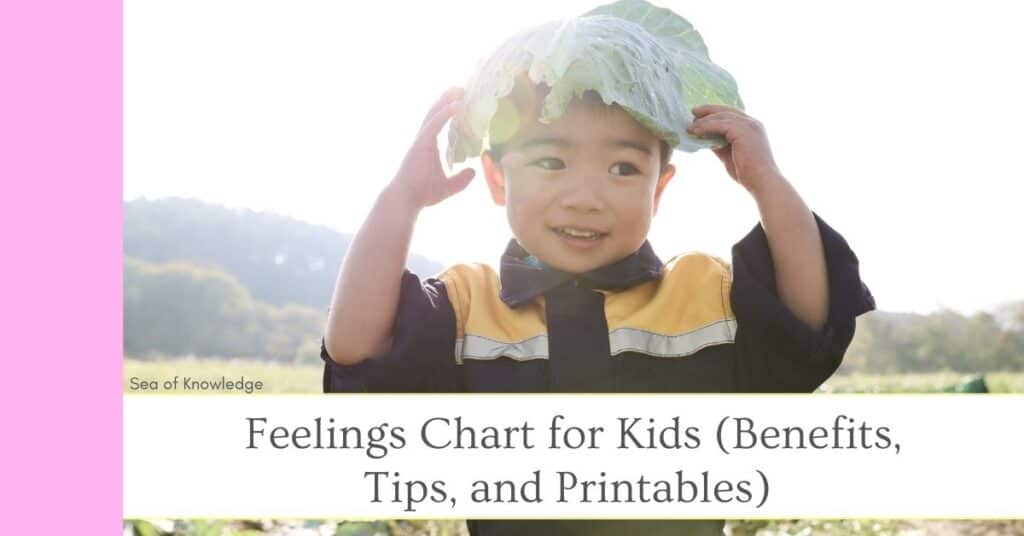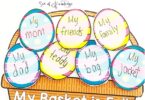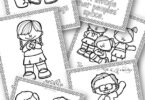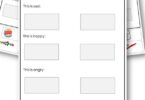Did you know that toddlers can already experience anxiety? It’s actually quite normal even for their age, but of course, they wouldn’t know how to manage it. They wouldn’t even know the words to describe it. Social Emotional Skills are so important. Looking for a feelings chart and tips you can use to navigate this? Read on.
This is where a mood chart for kids can be helpful.
It aids children in better understanding and managing their emotions, which leads to having a positive self-image and also becoming more understanding and empathetic to their peers.
Before we get to the types of mood charts, their benefits, and whatnots, let’s first identify, what exactly is a mood chart.
What Is A Mood Chart For Kids?
A mood chart or feelings chart is quite simply, a chart or guide that shows a label of our different feelings or emotions.
It can have different variations and it can be targeted towards an adult who is monitoring their mental health, people with learning disabilities, or in this case, children. Understanding anxiety in children is paramount.
A mood chart for kids tends to have more simple and basic emotions.
It’s limited to a certain number of feelings as one, younger children won’t be able to understand other complicated emotions, and two, you wouldn’t want to overwhelm the kids with too much information.
- 7 Fun & Free Animal riddles for kids – Handwriting Bonus!
- 10+ Simple Kids Graduation Craft Ideas to End the Year with a Bang
- End of Year Kindergarten Activities – Lapbook Your Kids will Ask for!
- 5 Best Free Printable Counting Cards Flower Themed Cards with Plastic Links
- 5 Easy Easter Bunny Craft – Qtip Bonus
The number of emotions you’d want to have in a mood chart depends on the age and temperament of the child. A mood chart for toddlers up to kindergarteners can have a range of 5 to 40 emotions.
A mood chart for older kids can have more complex labels of feelings and can have up to 80 emotions.
Benefits of Mood Chart For Kids
A mood chart has a lot of benefits for both the child and the adult.
For kids, it can help them to:
Broaden their vocabulary
Kids with a limited vocabulary won’t be able to better communicate to their parents or caregivers what they’re feeling. So having a mood chart can help them widen their terminology and to give a word and identify their emotion.
Communicate better
Children who know the difference between various emotions would be able to better relay what they are feeling. So parents can provide them with help or the right way to manage those feelings.
Lessens behavioral problems
Kids who are able to identify their moods struggle less with communicating what they need, leading to fewer outbursts or tantrums.
Lessens anxiety
As mentioned before, even younger kids, like toddlers, can already experience anxiety. They could be anxious about going to school, bedtime battles, being weaned from their bedtime bottle, potty training, or more.
A review of various studies showed that if kids know how to label and express their emotions, they will exhibit fewer anxiety symptoms.
Develops emotional intelligence
When children can label their emotions, they become better at managing their feelings and also the way they react and/or communicate to different people.
They can become more empathetic to the feelings of others, leading them to become more supportive and helpful towards other people.
Kids who are also better at expressing their emotions, learn to normalize and manage their worries and fears. Which helps them become more mentally and emotionally capable. It leads them to develop resilience and healthy coping skills.
How to Make a Simple Mood Chart For Kids
If you have a toddler or preschooler at home, you just need a basic mood chart with a few emotions that your kids usually exhibit.
You can draw some simple faces or an emoji of a feeling or better yet, download a printable template or mood chart.
The drawings and labeling of emotions should be written clearly, so the child can better differentiate them from each other.
You can also get creative with your mood chart by coloring them, using a clip to point at emotion, and more.
Here’s a video Feelings Chart for Kids that describes vocabulary in picture and animation formation:
Printable Mood Chart For Kids
Here’s a list of printable mood charts or feelings charts that you can readily buy (or get for free) print, and use to help your kids identify and express their emotions.
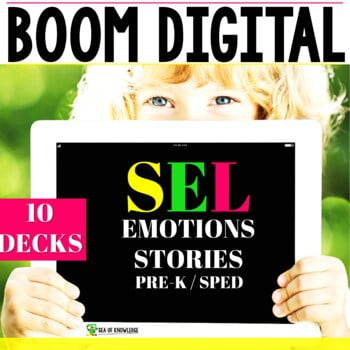
Feelings Chart and Emotions Digital Activities for toddlers and preschoolers. This bundle includes ALL major feelings and emotions which help preschoolers identify and manage.
1. Rainbow Feelings Chart & Poster for Kid
2. Emoji Feelings Chart and Keep Calm Posters
3. Magnet Feelings Poster for Kids
4. Emotions and Feelings Chart For Kids
5. Carson Dellosa Emotions Chart
8. Free Printable Mood & Emotion Wheel Chart for Children
9. FEELINGS AND EMOTION CHART FOR KIDS
Tips on How To Use a Mood Chart For Kids At Home
Place it where your child can easily see it
It would be better if your child can quickly see and use the mood chart. This can encourage them to initiate learning about their emotions.
The best places to put a mood chart would be in your child’s bedroom or on your fridge.
Wait for the right moment to use it
Don’t take it out when your child is in the middle of a tantrum. They wouldn’t be able to process it, let alone listen to you tell them about their emotions.
Wait for them to ride out their temper. Once they’ve calmed down, bring out the mood chart and discuss it with them. Help them identify and understand what they were feeling while they were having a tantrum.
Point out happy emotions too
It’s easy to just emphasize negative emotions when using a mood chart but focus on happy feelings too. If you see your kid having loads of fun or just smiling and looking happy, ask them what they’re feeling and let them point it out to you on their mood chart.
Takeaway on Feelings Chart For Kids
Mental health issues are soaring lately and even little kids are not immune to it, with some even succumbing to depression at times.
So learning how to regulate and manage their feelings is a skill they need to learn to grow up into a well-adjusted adult. Help them out by starting with identifying their feelings using a mood chart for kids.

